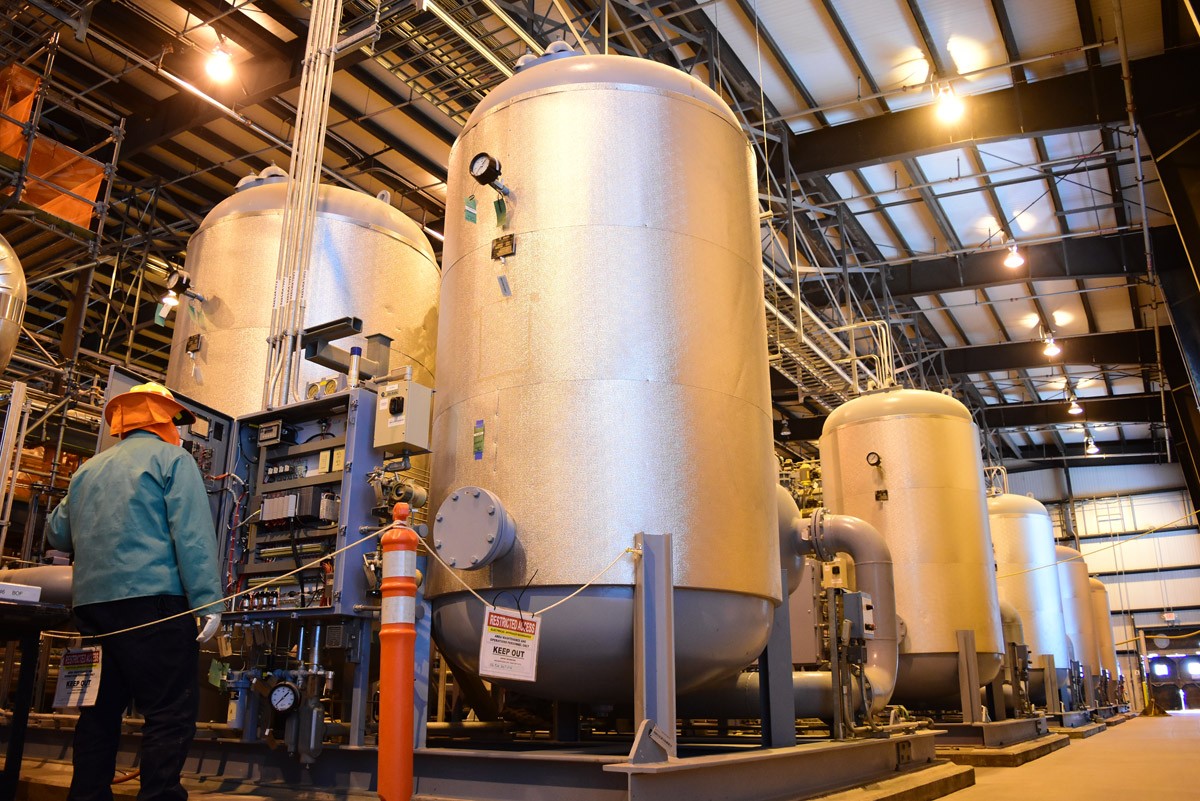Four Vit Plant utility buildings move into startup and testing phase
The Hanford Vit Plant recently turned over four more utility buildings that are part of the Balance of Facilities (BOF) for startup and testing.
The Vit Plant continues to transition from construction to startup and commissioning, supporting the Department of Energy’s (DOE’s) plan to treat tank waste at the Hanford Site through the Direct Feed Low-Activity Waste (DFLAW) approach by 2023.
The Anhydrous Ammonia Facility, Glass Former Storage Facility, Chiller Compressor Building, and Steam Plant Building are now in the startup phase, where they are verified and tested as complete and in safe working order. The startup phases for the facilities are scheduled for completion in 2019.
“We are steadily progressing on our path to completion as we turn more and more systems and facilities over from construction to startup and commissioning,” said Valerie McCain, Bechtel principal vice president and Vit Plant project director.
After startup, systems will undergo a commissioning phase to ensure they are ready to support future plant operations.
The four support facilities will provide critical support to the Vit Plant during operations:
- The Anhydrous Ammonia Facility will store liquid ammonia and transfer gaseous ammonia to the vitrification facilities to reduce nitrogen oxide in their off-gas streams.
- The Glass Former Storage Facility will house the glass-forming materials to be mixed with Hanford tank waste, allowing the liquid waste to be converted to glass.
- The Chiller Compressor Building houses major equipment for plant and instrument service air, and chilled water, which all provide utility services to the Vit Plant.
- The Steam Plant will supply high-pressure steam to equipment in the vitrification facilities. The plant also provides low-pressure steam for heating equipment throughout the Vit Plant.
“Turning these four buildings over to startup is another step that demonstrates our continued commitment to meeting the mission and supporting DOE’s DFLAW approach,” said Rick Holmes, Waste Treatment Completion Company general manager.
BOF contains a total of 56 systems, including electrical power distribution, backup power, water purification, compressed air, steam, communication and control, and fire water systems. Of the 56 systems, 27 have successfully completed startup and testing and have transitioned to the commissioning phase; 24 are in the startup phase; and the final five are nearing turnover from construction to startup.
The DFLAW approach is expected to allow treatment of low-level waste to begin by the court-ordered milestone date of 2023.
About the Office of River Protection
The U.S. Department of Energy's (DOE) Hanford Site in southeast Washington state is home to 56 million gallons of chemical and radioactive waste stored in underground tanks – the result of more than four decades of plutonium production. The Office of River Protection (ORP) is responsible for the retrieval, treatment, and disposal of this waste in a safe, efficient manner. The River Protection Project is the largest and most complex environmental remediation project in the nation.
About Bechtel
Bechtel is designing and building the world’s largest radioactive waste treatment plant for the U.S. Department of Energy at the Hanford Site in southeastern Washington state. The Waste Treatment and Immobilization Plant, also known as the Vit Plant, will immobilize the millions of gallons of radioactive liquid waste stored in 177 underground tanks using a process called vitrification






